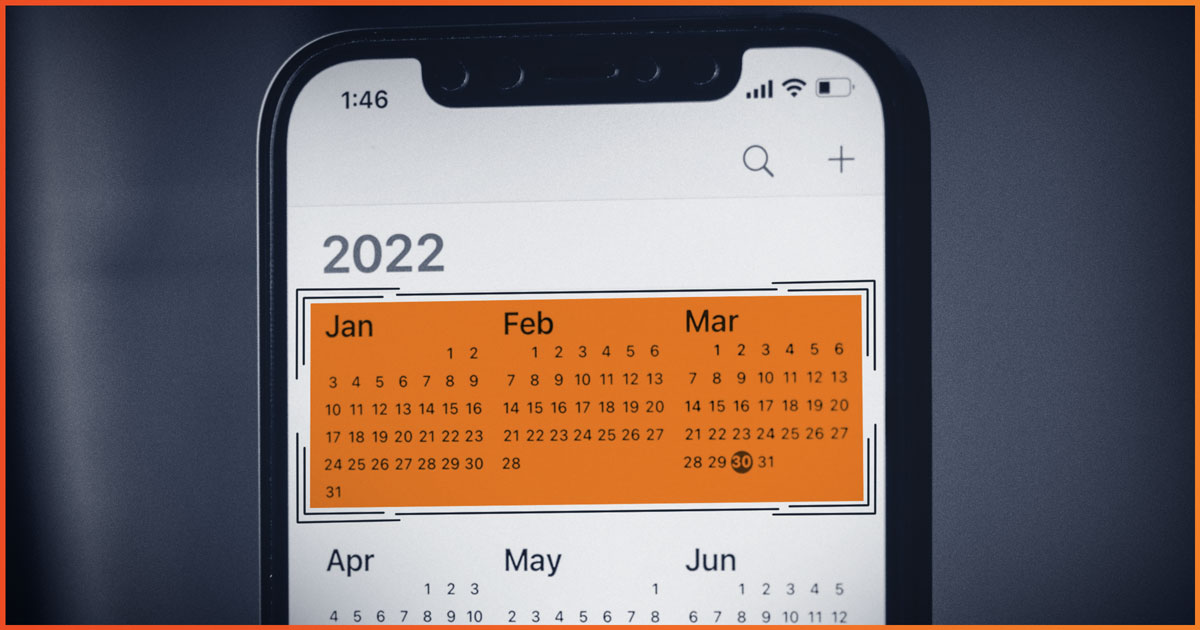
Businesses running on EOS® operate in a 90-Day World® as part of the proven EOS Process®. As part of that 90-Day World, the leadership or department team spends one full day working on the business in a quarterly meeting. This meeting provides the team with the opportunity to evaluate performance, refocus, set priorities for the next 90 days, and resolve any issues impeding progress.
Each quarterly meeting agenda includes the same seven basic steps to properly align the team:
1. Segue
15 minutes
Consider this the warm-up. To get the ball rolling, each person in the meeting shares the following:
- Their best news (personal and professional) from the last 90 days.
- What is and isn’t working within the organization.
- Expectations for the meeting.
This helps get everyone working on the business and identifies key issues that should be discussed later in the meeting. Stating clear expectations helps to set the stage for the real work ahead.
2. Previous Quarter Review
30 minutes
Team members review key measurables at the company level or department level. Then they review the goals (or what we call Rocks) from the previous quarter, identifying how many were completed. If the team didn’t complete at least 80% of Rocks set in the previous quarter, discuss what worked and what didn’t. This allows you to learn from past mistakes and improve.
Leaders may choose to carry an incomplete Rock over to the next quarter if it’s still a priority to complete. The last portion of the Rock can become an action item for the To-Do List or get reassigned to someone else.
3. Review the Vision/Traction Organizer® (V/TO®)
60 minutes
Next, teams review the V/TO to refresh their memory about the company vision and to ensure that everyone’s on the same page about the future. If anyone has concerns, questions, or confusion, they need to speak up now.

4. Establish Next Quarter’s Rocks
120 minutes
List all items that must get done this quarter. Keep in mind that this priority list should get you closer to the annual goals listed on your V/TO. Decide to “keep, kill, or combine” everything on the list to get down to the top three to seven Rocks, assigning ownership to each item.
Here are a few best practices to incorporate when setting Rocks.
5. Tackle Key Issues
180 minutes
Using the Issues List, the team removes all resolved issues by newly created Rocks and adds any new items as needed. Resolve issues using the Identify, Discuss, and Solve (IDS®) method as described in the Issues Solving Track™.
To IDS, first prioritize the top three issues on your list to discuss. The team then identifies an issue’s root cause, openly discusses possible solutions, and then defines action steps. Completing these action steps will resolve the issue forever. The team carries forward any issues that aren’t ready to be resolved yet.
Solve issues for good with these helpful tips.
6. Next Steps
7 minutes
Everyone discusses the next steps, identifying owners of action items or to-dos and necessary communications to the full organization based on the decisions made.
7. Conclude
8 minutes
Finally, each team member shares three things to end the meeting, including:
- Their overall feedback on the day.
- Their feedback on whether their expectations were met or not.
- A meeting rating – each team member rates the meeting from 1 to 10 on the level of effectiveness. (An effective meeting should have an average rating of at least 8.)
You can run a quarterly meeting while self-implementing. But with the help of an EOS Implementer®, you can master the EOS Tools (and see results) much faster. Looking for an Implementer to help your business? Meet your match today!
EOS ONE™
ONE VISION. ONE SYSTEM. ONE TEAM.™
Get everything you need to run your business better and faster on EOS® with the all-in-one software for communicating your vision, driving Traction®, and accelerating team health.
Exclusively from the makers of EOS.






